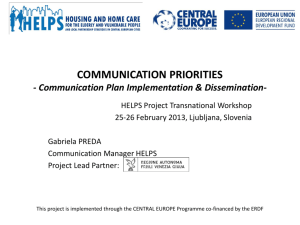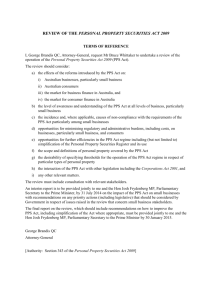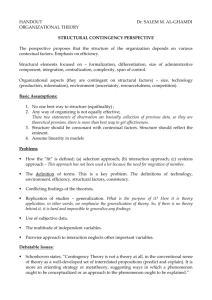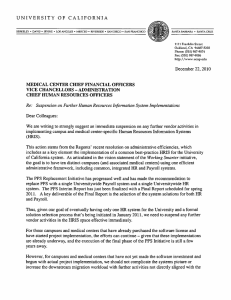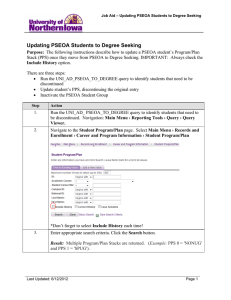Potential problem analysis
advertisement
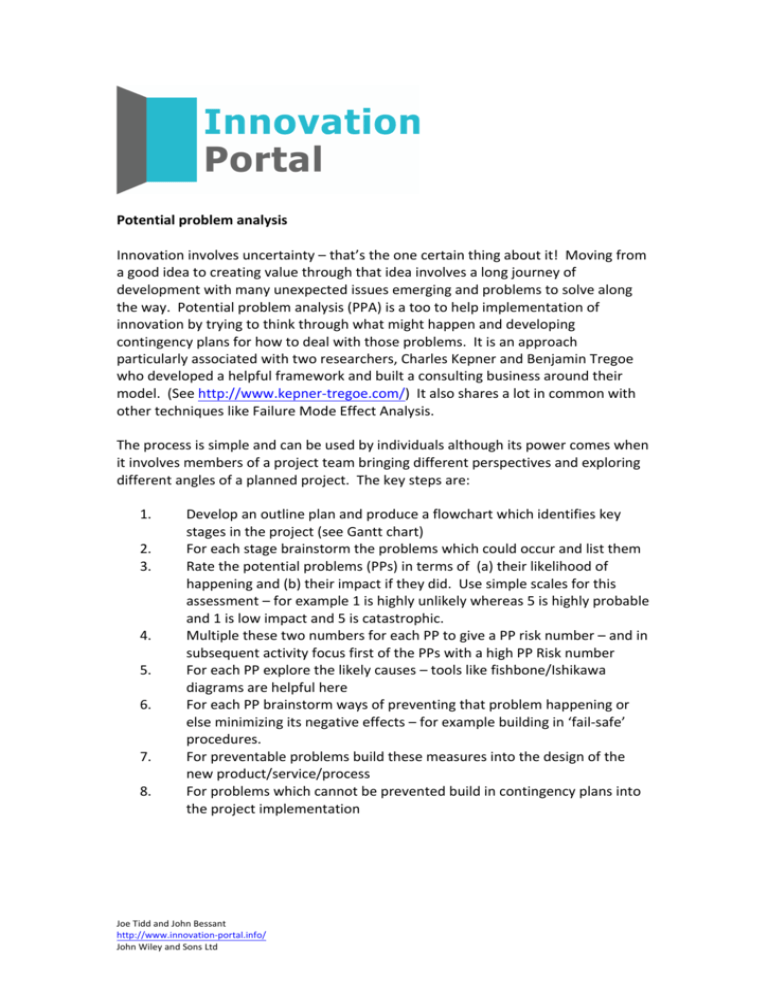
Potential problem analysis Innovation involves uncertainty – that’s the one certain thing about it! Moving from a good idea to creating value through that idea involves a long journey of development with many unexpected issues emerging and problems to solve along the way. Potential problem analysis (PPA) is a too to help implementation of innovation by trying to think through what might happen and developing contingency plans for how to deal with those problems. It is an approach particularly associated with two researchers, Charles Kepner and Benjamin Tregoe who developed a helpful framework and built a consulting business around their model. (See http://www.kepner-­‐tregoe.com/) It also shares a lot in common with other techniques like Failure Mode Effect Analysis. The process is simple and can be used by individuals although its power comes when it involves members of a project team bringing different perspectives and exploring different angles of a planned project. The key steps are: 1. Develop an outline plan and produce a flowchart which identifies key stages in the project (see Gantt chart) 2. For each stage brainstorm the problems which could occur and list them 3. Rate the potential problems (PPs) in terms of (a) their likelihood of happening and (b) their impact if they did. Use simple scales for this assessment – for example 1 is highly unlikely whereas 5 is highly probable and 1 is low impact and 5 is catastrophic. 4. Multiple these two numbers for each PP to give a PP risk number – and in subsequent activity focus first of the PPs with a high PP Risk number 5. For each PP explore the likely causes – tools like fishbone/Ishikawa diagrams are helpful here 6. For each PP brainstorm ways of preventing that problem happening or else minimizing its negative effects – for example building in ‘fail-­‐safe’ procedures. 7. For preventable problems build these measures into the design of the new product/service/process 8. For problems which cannot be prevented build in contingency plans into the project implementation Joe Tidd and John Bessant http://www.innovation-­‐portal.info/ John Wiley and Sons Ltd Many PPA approaches use some form of table with the project stages, the PPs, the risk number, the possible causes and prevention/management actions as a framework for the process. Project Potential Likelihood Impact of PP Risk stage problem(s) of occurrence number occurrence Joe Tidd and John Bessant http://www.innovation-­‐portal.info/ John Wiley and Sons Ltd Possible Prevention Contingency causes measures plans
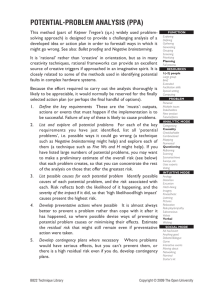
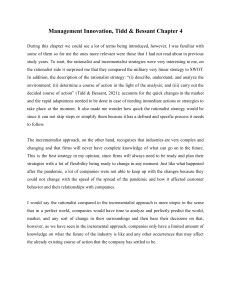

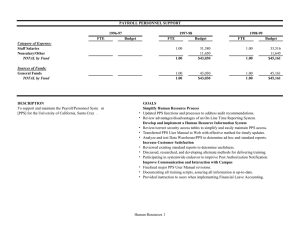
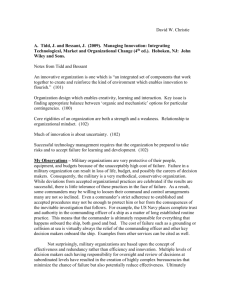
![013—BD Global [DOC 117KB]](http://s3.studylib.net/store/data/005892885_1-a45a410358e3d741161b3db5a319267b-300x300.png)
